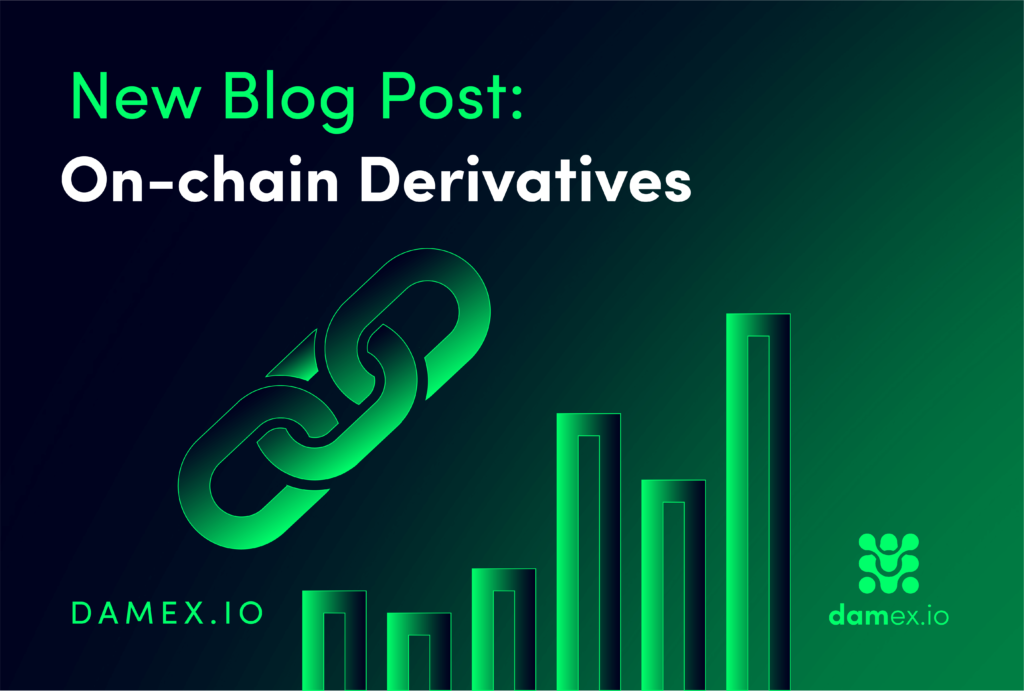On-Chain Derivatives
- On-chain crypto trading activity has always been dominated by spot markets, despite alarge amount of derivatives activity on centralised exchanges in recent years.
- Decentralised alternatives for futures and options trading are beginning to emerge butare still in a very early stage of development.
- What is the design of the early front-runners and what advantages could these have overcentralised derivatives trading?
Futures
One of the key features of the now defunct FTX exchange was its very deep perpetual futures market. This is one of the main reasons a lot of institutional capital was caught when withdrawals were halted last month. Binance also has a very liquid futures market and the ability to go long or short in significant size via futures is often the desired way for institutions to gain directional exposure. Recently, there have been some efforts to create legitimate futures markets on-chain.One of the benefits of a decentralised solution could be the avoidance of an FTX-style collapse. DYDX and GMX are currently two early front-runners in this area but both have very different trading mechanisms. DYDX operates a central limit order book (CLOB) exchange via anoff-chain orderbook. This keeps some of the benefits of a centralised exchange but allows users to connect and trade via their decentralised crypto wallets. GMX has a very different design, it is an oracle-based solution that uses price feeds from exchanges like Binance. There isn’t price discovery the way there is on a CLOB exchange but speculation on price can still occur. The scalability of this model is questionable and the dual token model (GMX and GLP) does allow for multiple potential attack vectors (bad debt, toxic flow etc.) which could damage or even break the protocol. However, the DYDX model is not without problems either. The tokenomics are likely going to cause significant price headwinds with several huge token unlocks on the horizon. There is a need to incentivise market makers (which DYDX has bootstrapped with its own token thusfar) and therefore a large number of users is required to justify having sophisticated market makers on the platform, before the token value is crushed too much. Liquidity begets liquidity anda venue with good price execution and low fees is appealing for new users to join. This is in some ways a chicken and egg problem but it also means that if a solid market leader can emerge it may be difficult to displace them once they are well established. This is similar to centralised exchanges, where Binance is going to be very hard to knock off the top spot now it is so entrenched in the ecosystem and its liquidity is so high.
Options
Options have been around in crypto for some time now, with Deribit leading the way in terms of the centralised exchanges. On-chain, the picture is less clear. In addition to options fragmenting liquidity by nature (multiple strikes and expiries thin out order matching) there are many protocols vying for the same finite user base. Due to the more niche nature of options compared to other financial instruments, engagement has thus far been limited. Despite this, a lot of building has occurred in the last couple of years. Protocols like Siren, Hegic, Premia and Shield all deliver an options trading platform on-chain. They all have their quirks – the quality of the UI is variable, different pricing models are used (they are not all pure Black Scholes) and some have a wider variety of instruments than others. It is still far too early to pick a winner but this is definitely an area of the market to keep an eye on. There are also a few new protocols that are pre-launch but are garnering attention from enthusiasts, notably Aevo.
DOV’s and Exotic Products
Apart from vanilla option products, other instruments unique to crypto have also been constructed on several platforms. The most well known of these are DeFi option vaults (DOV’s) that trade on protocols like Ribbon Finance. Users can allocate crypto to vaults that run specific option strategies (like selling covered calls, cash-secured puts etc.) to earn yield. The vaults have limited space, as there is only so much liquidity available to execute these strategies. And of course there are various risks depositors are taking on by establishing such a position. Nonetheless these are an interesting solution for investors looking for an automated options strategy without exposure to delta. To run this manually takes quite a bit of time and an understanding of options so it is possible we see protocols like this gain a lot of attention from retail traders in the next bull run. This is assuming yields remain solid and the protocols can scale their total value locked (TVL) to meet demand. Apart from DOV’s there are some more exotic products like Squeeth, built by the Opyn team. Mechanically, Squeeth functions like a perpetual swap, tracking an index of ETH2 rather than ETH. It provides options-like exposure (pure convexity) without any expiration or specific strike price. Squeeth makes options perpetual and isa very effective hedge for DEX LP positions (which naturally generate a short gamma-like effect and can be tricky to hedge). This is probably something more sophisticated traders or institutional portfolio managers would consider using as part of a more complex strategy, but it is good to see such innovation occurring. Even if liquidity remains fairly low for now, the next bull run could elicit a lot of adoption for the winners in this market sector. Whether this is driven by retail or by institutions, for now remains to be seen.



